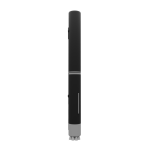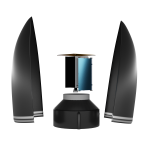ASTROPHEL AEROSPACE, another Indian space start up, have recently tested their 2.8kN "Potentia" semi-cryogenic engine:
The engine is a pressure fed & uses LOX/Ethanol propellant. The engine can produce up to 5kN with a full-size C/D nozzle. They are currently getting a sea-level specific impulse of 285 sec.
Indian Rocket Startup Astrophel Aerospace Successfully Test Fires Prototype Cryogenic Engine
Pune-based rocket startup, Astrophel Aerospace has successfully tested its prototype cryogenic engine, said one of the founders.
IANS | Aug 17, 2023 05:44 PM IST
View attachment 29845
Chennai, Aug 17: Pune-based rocket startup, Astrophel Aerospace has successfully tested its prototype cryogenic engine, said one of the founders. “The prototype Potentia C1 cryogenic engine was test fired on August 14. The firing was a success as the engine achieved all the parameters,” Co-Founder and COO, Immanuel Louis told IANS.
The engine was fuelled by a mix of ethanol and liquid oxygen and was fired for eight seconds and achieved a thrust of 2.8kN, he said. Astrophel Aerospace is promoted by three young persons -- Suyash Bafna, Founder and CEO, Taj Baba, Co-Founder and CTO and Louis.
Bootstrapped or running their startup with their own funds, the 'Amar, Akbar, Anthony' of the Indian space sector had earlier told IANS that they would first test the rocket’s cryogenic engine and then approach the investors for funds.
The company is planning to build a three staged rocket with a carrying capacity of about 200kg for low earth orbit, Louis said. According to Louis, their Astra series rocket can even have all the stages powered by cryogenic engines or a mix of liquid and solid powered engines.
He said the company would be needing about $1.5 – 2 million to increase its headcount and also improve the testing facilities. “We will first test our rocket with a sub-orbital launch and then go for a full-fledged launch three years from now,” Louis remarked.
Indian Rocket Startup Astrophel Aerospace Successfully Test Fires Prototype Cryogenic Engine |  LatestLY
LatestLY
Few months back they also conducted a cryogenic cold flow test of the same engine:






















 LatestLY
LatestLY



